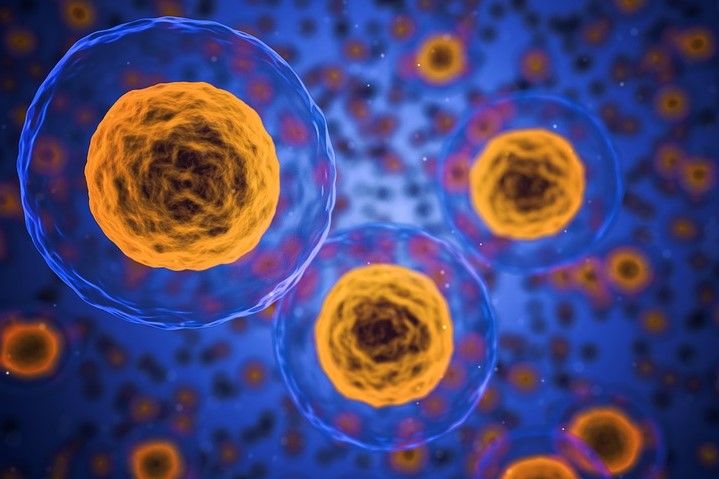Join us for a presentation by Louis van der Elst on advances in 3D printing for medical applications. Louis' research, conducted in collaboration with colleague Merve Gokce Kurtoglu, focuses on the use of fiber devices in tissue engineering. The presentation will take place on April 14, 2020 from 1:30pm to 1:45pm, in Phoenix, Arizona, at the Phoenix Convention Center (North), Level 200, room 225B. The 2020 MRS Spring Meeting will be taking place from April 13 to April 17. See you soon in Phoenix!
Bioink extrusion-printing, while capable of creating macroscopically accurate anatomic models, fails to replicate the microstructure of the natural tissue due to resolution limitation of this bottom-up fabrication approach. We re-engineer the extrusion process to co-extrude a fiber device in line with the hydrogel bioink. This allows deviation from a pure bottom-up towards a combined approach, where a bottomup extrusion process creates the macrostructure, while the fiber device in a top-down fashion subsequently promotes the growth of natural microstructure from within the volume of the print.
Fibers can embed a range of bio-functional and biosensing devices and systems. We aim to incorporate microfluidic, ultrasonic, and shape-memory-alloy (SMA) structures mimicking the functionalities of microvasculature, innervation, and musculature, respectively, into a single fiber-device. Those functional structures are created by a thermal draw of fibers from multimaterial preforms – a process familiar from an optical communication fiber fabrication. In this process, the macroscopic preform – a thick and short rod, crosssectionally structured to meet the desired fiber functionality – is heated to become a viscous liquid and scaled by a thermal draw into a thin and long fiber, preserving the cross-sectional geometry of the preform. Then the fiber cores are patterned axially by a spatially coherent material selective capillary instability to form arrays of ultrasonic transducers contacted in parallel and microchannels with periodic outlets spanning the entire fiber length[1].
In the extrusion process, the fiber is coated with hydrogel, contains tissue cells, extracellular matrix material, nutrients and growth-factors, forming a scaffolded print-line that is raster-layed into a printed model cross-section additively constructing the final model in a layer-by layer manner. Subsequently, the fiber-embedded microchannel structure is used as artificial vasculature supplying building material and nutrients into surrounding bioink to ignite the creation of natural vasculature and promote the proliferation of the bioinkcontained tissue cells with their subsequent maturation into a natural-tissue-like structure. The ultrasonic transducers embedded in the fiber are used to sense the changes in the surrounding material density, monitoring cell-proliferation process, thus serving as artificial tactile nerves. SMA cores, contracting upon transduction of electric current, mimic the function of muscle yarns.
The proposed bioprinting approach will likely deliver a biosynthetic tissue with natural-like microstructure opening new routes in regenerative medicine, such as wound infilling and organ replacement. Moreover, it would allow creating lab-bench anatomical models of realistic tissue, in which bio-material delivery and biosensing is performed volumetrically with a microscale resolution, thus forming a novel stand-alone platform for investigation of micrometabolic processes. Such a platform would be a valuable asset to drug toxicity investigation, and real-time survivability monitoring of such artificial tissues and organs both in-vitro and in animal subjects.
[1] C. Faccini de Lima, L. van der Elst et al., “Towards Digital Manufacturing of Smart Multimaterial Fibers,” Nanoscale Res. Lett. 14, 209 1-6 (2019).


